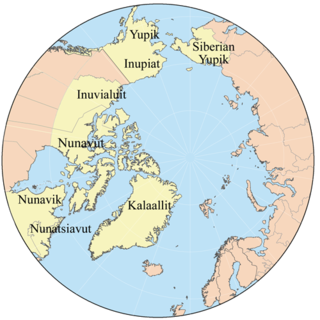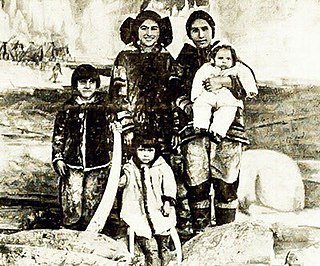 W
WEskimo or Eskimos are the indigenous circumpolar peoples who have traditionally inhabited the northern circumpolar region from eastern Siberia (Russia) to Alaska, Northern Canada, Nunavik, Nunatsiavut and Greenland.
 W
WThe Folsom Complex was a Paleo-Indian archaeological culture that occupied much of central North America. The term was first used in 1927 by Jesse Dade Figgins, director of the Colorado Museum of Natural History.
 W
WIndigenous Canadians are the Indigenous peoples within the boundaries of Canada. They comprise the First Nations, Inuit and Métis. Although "Indian" is a term still commonly used in legal documents, the descriptors "Indian" and "Eskimo" have somewhat fallen into disuse in Canada, and some consider them to be pejorative. "Aboriginal" as a collective noun is a specific term of art used in some legal documents, including the Constitution Act, 1982, though in some circles that word is also falling into disfavour.
 W
WInuit are a group of culturally similar indigenous peoples inhabiting the Arctic regions of Greenland, Canada and Alaska. The Inuit languages are part of the Inuit-Yupik-Unangan family. Inuit Sign Language is a critically endangered language isolate used in Nunavut.
 W
WInuit Nunangat is the homeland of the Inuit in Canada. This Arctic homeland consists of four northern Canadian regions called the Inuvialuit Settlement Region, the territory Nunavut (ᓄᓇᕗᑦ), Nunavik (ᓄᓇᕕᒃ) in northern Quebec and Nunatsiavut of Newfoundland and Labrador.
 W
WPaleo-Indians, Paleoindians or Paleo-Americans, were the first peoples who entered, and subsequently inhabited, the Americas during the final glacial episodes of the late Pleistocene period. The prefix "paleo-" comes from the Greek adjective palaios (παλαιός), meaning "old" or "ancient". The term "Paleo-Indians" applies specifically to the lithic period in the Western Hemisphere and is distinct from the term "Paleolithic".
 W
WThe Way of the Eskimo is a lost 1911 American silent drama film that portrayed the Inuit or "Eskimo" culture of northeastern Canada along the coast of Labrador. Directed by William V. Mong and produced by Selig Polyscope Company, this "photoplay" was based on a love story written by Columbia Eneutseak, a young Inuit woman who was born in the United States in 1893, in the "Esquimaux Village" exhibition at the World's Columbian Exposition in Chicago. She, fellow Inuit performer Zacharias Zad, and William Mong costarred in the film with a supporting cast that included members of Columbia's immediate family and other Inuit players. While this production was promoted in 1911 as being filmed on location in northern Canada, it was actually shot that year at the snow-covered port town of Escanaba, Michigan, along a frozen stretch of shoreline of Little Bay de Noc, which connects to Lake Michigan.